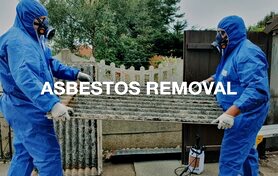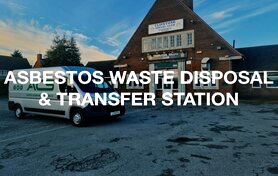The Hidden Danger in the UK’s Green Revolution
The green revolution is upon us, promising greater energy efficiency and financial savings amidst the UK’s cost-of-living crisis. However, this shift towards greener domestic and commercial properties has heightened the asbestos risk for contractors, many of whom may not recall the severe impact of the asbestos crisis in the 1970s and 1980s.

“Green is good, in many instances. But going green does create new risks, one of which is asbestos coming to light during upgrades.”
Asbestos use peaked in the UK between the 1950s and 1970s, a period when the health risks of asbestos exposure were not widely recognised. It wasn’t until the late 1970s and 1980s that the dangers became evident, prompting stricter regulations and eventual bans.
The primary health issues linked to asbestos are lung diseases such as asbestosis, lung cancer, and mesothelioma, which can take decades to develop. Thus, the impact of asbestos use during its peak years continues to affect us well into the 21st century.
In the 1980s, the UK government began regulating asbestos use, culminating in a 1985 ban on blue and brown asbestos, the most hazardous types. By 1999, all forms of asbestos were banned.
Ongoing Risk
Despite the ban nearly 25 years ago, asbestos-related diseases still claim around 5,000 lives annually in the UK. It is estimated that between 400,000 and 1.5 million buildings in the country still contain asbestos.
According to the NatWest Greener Homes Attitude Tracker in Q2 2023, 66% of homeowners plan to improve the environmental sustainability of their properties within the next decade, up from 63% in Q1. In the commercial sector, regulations are expected to tighten, mandating that buildings meet minimum energy-efficiency standards by 2030 and achieve net-zero carbon emissions by 2050.
These trends increase the likelihood of encountering dormant asbestos, posing risks to contractors who might unknowingly disturb it or avoid hiring certified asbestos removal firms to cut costs.
The Health and Safety Executive offers extensive guidance on asbestos. Contractors should familiarise themselves with the risks and protocols for handling asbestos if discovered on-site. Strict adherence to regulations and careful management of asbestos during renovation or demolition are crucial to preventing exposure.
For commercial projects, contractors should always request a location register. If unavailable, work should cease until a competent person can take a sample.
If asbestos is found, contractors should:
- Stop work immediately.
- Restrict site access.
- Notify relevant authorities, including the property owner and health and safety representatives.
- Have professionals assess the site.
- Develop a management and removal plan with an asbestos professional, and have it approved by the property owner and authorities.
- Safely remove and dispose of the asbestos.
- Conduct air monitoring and clearance tests before re-entering the site.
- Document the discovery and removal process.
Insurance
From an insurance perspective, understanding coverage for contractors is crucial.
Most insurers require that work stops immediately if asbestos is found, and an approved removal contractor is called in. If contractors handle the removal themselves and subsequent losses occur, insurance coverage may be void.
For commercial buildings, contractors should verify the type and location of asbestos from the owner’s register, although inaccuracies can occur. Employers’ liability coverage typically remains valid for accidental discoveries, but public liability—covering damage to property and public injuries—will often be excluded.
Domestic dwellings lack a register, and insurers assess the risk differently. Roofers removing asbestos outside may be covered, but electricians drilling into asbestos walls often won’t be covered for resulting damages.
While green initiatives are beneficial, they bring new risks, such as asbestos exposure during property upgrades. Therefore, contractors must remain vigilant when upgrading properties to ensure safety and compliance with regulations.





